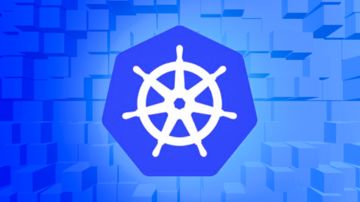前言
前一篇 已经成功创建了一个服务注册中心,现在我们创建一个简单的微服务,让这个服务在服务注册中心注册。然后再创建一个调用者,调用此前创建的微服务。
创建微服务
新建一个maven工程,修改pom.xml引入 spring cloud 依赖:
<parent> <groupId>org.springframework.boot</groupId> <artifactId>spring-boot-starter-parent</artifactId> <version>1.4.2.RELEASE</version></parent><dependencies> <dependency> <groupId>org.springframework.cloud</groupId> <artifactId>spring-cloud-starter-eureka</artifactId> </dependency></dependencies><dependencyManagement> <dependencies> <dependency> <groupId>org.springframework.cloud</groupId> <artifactId>spring-cloud-dependencies</artifactId> <version>Camden.SR2</version> <type>pom</type> <scope>import</scope> </dependency> </dependencies></dependencyManagement>
在 resources 目录中创建 application.yml 配置文件,在配置文件内容:
spring: application: name: @project.artifactId@ server: port: 8100eureka: client: serviceUrl: defaultZone: http://localhost:8000/eureka/
这里eureka的注册地址为上一篇中设置的defaultZone。
在 java 目录中创建一个包 demo ,在包中创建启动入口 AddServiceApplication.java
@EnableDiscoveryClient@SpringBootApplicationpublic class AddServiceApplication { public static void main(String[] args) {
SpringApplication.run(AddServiceApplication.class, args);
}
}在demo包下新建一个子包controller,在controller子包下创建一个controller对外提供接口。
@RestController
public class AddController {
@RequestMapping(value = "/add", method = RequestMethod.GET)
public Map<String, Object> add(Integer a, Integer b) {
System.out.println("端口为8100的实例被调用"); Map<String, Object> returnMap = new HashMap<>();
returnMap.put("code", 200);
returnMap.put("msg", "操作成功");
returnMap.put("result", a + b); return returnMap;
}
}在服务注册中心已经运行的情况下,运行 AddServiceApplication.java 中的 main 方法,启动微服务。
访问服务注册中心页面 http://localhost:8000, 可以看到已经成功注册了 ADD-SERVICE-DEMO 服务。
服务注册中心
启动第二个实例,修改端口为 8101 ,修改 AddController.java 中的输出信息为
System.out.println("端口为8101的实例被调用");再次运行 AddServiceApplication.java 中的 main 方法。
访问服务注册中心页面 http://localhost:8000, 可以看到已经成功注册了两个 ADD-SERVICE-DEMO 服务,端口分别为 8100 和 8101。服务注册中心2
demo源码 spring-cloud-1.0/add-service-demo
ribbon方式调用服务
新建一个maven工程,修改pom.xml引入 spring cloud 依赖:
<parent> <groupId>org.springframework.boot</groupId> <artifactId>spring-boot-starter-parent</artifactId> <version>1.4.2.RELEASE</version></parent><dependencies> <dependency> <groupId>org.springframework.cloud</groupId> <artifactId>spring-cloud-starter-ribbon</artifactId> </dependency> <dependency> <groupId>org.springframework.cloud</groupId> <artifactId>spring-cloud-starter-eureka</artifactId> </dependency></dependencies><dependencyManagement> <dependencies> <dependency> <groupId>org.springframework.cloud</groupId> <artifactId>spring-cloud-dependencies</artifactId> <version>Camden.SR2</version> <type>pom</type> <scope>import</scope> </dependency> </dependencies></dependencyManagement>
在 resources 目录中创建 application.yml 配置文件,在配置文件内容:
spring: application: name: @project.artifactId@ server: port: 8200eureka: client: serviceUrl: defaultZone: http://localhost:8000/eureka/
在 java 目录中创建一个包 demo ,在包中创建启动入口 RibbonClientApplication.java
@EnableDiscoveryClient@SpringBootApplicationpublic class RibbonClientApplication { public static void main(String[] args) {
SpringApplication.run(RibbonClientApplication.class, args);
} @Bean
@LoadBalanced
RestTemplate restTemplate() { return new RestTemplate();
}
}这里配置了一个可以从服务注册中心读取服务列表,并且实现了负载均衡的 restTemplate。
在demo包下新建一个子包controller,在controller子包下创建一个controller对外提供接口。
@RestControllerpublic class RibbonController { @Autowired
RestTemplate restTemplate; @RequestMapping(value = "/add", method = RequestMethod.GET) public String add(Integer a, Integer b) { return restTemplate.getForEntity("http://ADD-SERVICE-DEMO/add?a="+a+"&b=" + b, String.class).getBody();
}
}可以看到这里的请求url用了服务注册中心对应的 Application。
运行 RibbonClientApplication.java 中的 main 方法,启动项目。
在浏览器中访问 http://localhost:8200/add?a=1&b=2 ,得到返回结果:
{ msg: "操作成功",
result: 3,
code: 200}多次访问,查看 AddServiceApplication 的控制台,可以看到两个 ADD-SERVICE-DEMO 被负载均衡的调用。
demo源码 spring-cloud-1.0/ribbon-client-demo
feign方式调用服务
新建一个maven工程,修改pom.xml引入 spring cloud 依赖:
<parent> <groupId>org.springframework.boot</groupId> <artifactId>spring-boot-starter-parent</artifactId> <version>1.4.2.RELEASE</version></parent><dependencies> <dependency> <groupId>org.springframework.cloud</groupId> <artifactId>spring-cloud-starter-feign</artifactId> </dependency> <dependency> <groupId>org.springframework.cloud</groupId> <artifactId>spring-cloud-starter-eureka</artifactId> </dependency></dependencies><dependencyManagement> <dependencies> <dependency> <groupId>org.springframework.cloud</groupId> <artifactId>spring-cloud-dependencies</artifactId> <version>Camden.SR2</version> <type>pom</type> <scope>import</scope> </dependency> </dependencies></dependencyManagement>
在 resources 目录中创建 application.yml 配置文件,在配置文件内容:
spring: application: name: @project.artifactId@ server: port: 8300eureka: client: serviceUrl: defaultZone: http://localhost:8000/eureka/
在 java 目录中创建一个包 demo ,在包中创建启动入口 FeignClientApplication.java
@EnableDiscoveryClient@SpringBootApplication@EnableFeignClientspublic class FeignClientApplication { public static void main(String[] args) {
SpringApplication.run(FeignClientApplication.class, args);
}
}在demo包下新建一个子包service,在service子包下创建一个接口 AddService.java 调用之前创建的微服务 ADD-SERVICE-DEMO。
@FeignClient("ADD-SERVICE-DEMO")
public interface AddService {
@RequestMapping(method = RequestMethod.GET, value = "/add")
String add(@RequestParam(value = "a") Integer a, @RequestParam(value = "b") Integer b);
}这里 @FeignClient 注解中的参数为服务注册中心对应的 Application。
在demo包下再新建一个子包controller,在controller子包下创建一个 FeignController.java 对外提供接口。
@RestControllerpublic class FeignController { @Autowired
private AddService addService; @RequestMapping(value = "/add", method = RequestMethod.GET) public String add(Integer a, Integer b) { return addService.add(a, b);
}
}FeignController 里注入了刚才创建的 AddService 接口。
运行 FeignClientApplication.java 中的 main 方法,启动项目。
在浏览器中访问 http://localhost:8300/add?a=1&b=2 ,得到返回结果:
{ msg: "操作成功",
result: 3,
code: 200}多次访问,查看 AddServiceApplication 的控制台,可以看到两个 ADD-SERVICE-DEMO 被负载均衡的调用。
demo源码 spring-cloud-1.0/feign-client-demo
使用docker-maven-plugin打包并生成docker镜像
以 add-service-demo 为例,
复制 application.yml,重命名为 application-docker.yml,修改 defaultZone为:
eureka: client: serviceUrl: defaultZone: http://service-registry:8000/eureka/
这里修改了 defaultZone 的访问url,如何修改取决于部署docker容器时的 --link 参数, --link 可以让两个容器之间互相通信。
修改 application.yml 中的 spring 节点为:
spring: application: name: @project.artifactId@ profiles: active: @activatedProperties@
这里增加了 profiles 的配置,在maven打包时选择不同的profile,加载不同的配置文件。
在pom.xml文件中增加:
<properties>
<java.version>1.8</java.version> <!-- 指定java版本 -->
<!-- 镜像前缀,推送镜像到远程库时需要,这里配置了一个阿里云的私有库 -->
<docker.image.prefix>
registry.cn-hangzhou.aliyuncs.com/ztecs </docker.image.prefix>
<!-- docker镜像的tag -->
<docker.tag>demo</docker.tag>
<!-- 激活的profile -->
<activatedProperties></activatedProperties></properties><profiles>
<!-- docker环境 -->
<profile>
<id>docker</id>
<properties>
<activatedProperties>docker</activatedProperties>
<docker.tag>docker-demo-${project.version}</docker.tag>
</properties>
</profile></profiles><build>
<defaultGoal>install</defaultGoal>
<finalName>${project.artifactId}</finalName>
<resources>
<resource>
<directory>src/main/resources</directory>
<filtering>true</filtering>
</resource>
</resources>
<plugins>
<!-- 配置spring boot maven插件,把项目打包成可运行的jar包 -->
<plugin>
<groupId>org.springframework.boot</groupId>
<artifactId>spring-boot-maven-plugin</artifactId>
<configuration>
<executable>true</executable>
</configuration>
</plugin>
<!-- 打包时跳过单元测试 -->
<plugin>
<groupId>org.apache.maven.plugins</groupId>
<artifactId>maven-surefire-plugin</artifactId>
<configuration>
<skipTests>true</skipTests>
</configuration>
</plugin>
<!-- 配置docker maven插件,绑定install生命周期,在运行maven install时生成docker镜像 -->
<plugin>
<groupId>com.spotify</groupId>
<artifactId>docker-maven-plugin</artifactId>
<version>0.4.13</version>
<executions>
<execution>
<phase>install</phase>
<goals>
<goal>build</goal>
<goal>tag</goal>
</goals>
</execution>
</executions>
<configuration>
<!-- 修改这里的docker节点ip,需要打开docker节点的远程管理端口2375,
具体如何配置可以参照之前的docker安装和配置的文章 -->
<dockerHost>http://docker节点ip:2375</dockerHost>
<imageName>${docker.image.prefix}/${project.build.finalName}</imageName>
<baseImage>java</baseImage>
<!-- 这里的entryPoint定义了容器启动时的运行命令,容器启动时运行
java -jar 包名 , -Djava.security.egd这个配置解决tomcat8启动时,
因为需要收集环境噪声来生成安全随机数导致启动过慢的问题-->
<entryPoint>
["java", "-Djava.security.egd=file:/dev/./urandom", "-jar", "/${project.build.finalName}.jar"] </entryPoint>
<resources>
<resource>
<targetPath>/</targetPath>
<directory>${project.build.directory}</directory>
<include>${project.build.finalName}.jar</include>
</resource>
</resources>
<image>${docker.image.prefix}/${project.build.finalName}</image>
<newName>${docker.image.prefix}/${project.build.finalName}:${docker.tag}</newName>
<forceTags>true</forceTags>
<!-- 如果需要在生成镜像时推送到远程库,pushImage设为true -->
<pushImage>false</pushImage>
</configuration>
</plugin>
</plugins></build>选择 docker profile,运行 mvn install -P docker ,打包项目并生成docker镜像,注意docker-maven-plugin中的 <entryPoint> 标签里的内容不能换行,否则在生成docker镜像的时候会报错。
运行成功后,登录docker节点,运行 docker images 应该可以看到刚才打包生成的镜像了。
启动docker容器并注册服务
在前一篇中,已经创建了一个 service-registry-demo 的docker镜像,这里先把这个镜像运行起来。
docker run -d --name service-registry-demo --publish 8000:8000 \ --volume /etc/localtime:/etc/localtime \ registry.cn-hangzhou.aliyuncs.com/ztecs/service-registry-demo:docker-demo-1.0
对这条命令做个简单说明, -d 指定当前容器运行在后台, --name 指定容器名称, --publish 指定端口映射到宿主机, --volume 这个挂载是为了解决容器内的时区和宿主机不一致的问题,让容器使用宿主机设置的时区,最后指定使用的docker镜像,镜像名称和标签需要根据自己的情况做修改。
运行这条命令之后,service-registry-demo 的容器就启动了。访问 http://宿主机IP:8000,打开注册中心的页面。
下边启动 add-service-demo 容器,
docker run -d --name add-service-demo --link service-registry-demo:service-registry --publish 8100:8100 \ --volume /etc/localtime:/etc/localtime \ registry.cn-hangzhou.aliyuncs.com/ztecs/add-service-demo:docker-demo-1.0
这条命令和上一条差不多,只是增加了一个 --link 参数,--link 指定容器间的连接,命令格式 --link 容器名:别名,这里连接了之前创建的名为 service-registry-demo 的容器,这里的别名和 application-docker.yml 文件中配置的 defaultZone 一致。其实就是通过别名找到了对应的容器IP,进到容器里查看 hosts 文件就明白了,其实就是加了条hosts映射。
add-service-demo 容器启动成功之后,刷新配置中心的页面,发现已经注册到配置中心了。
作者:月冷心寒
链接:https://www.jianshu.com/p/85a4dcdcd2b4

 随时随地看视频
随时随地看视频




